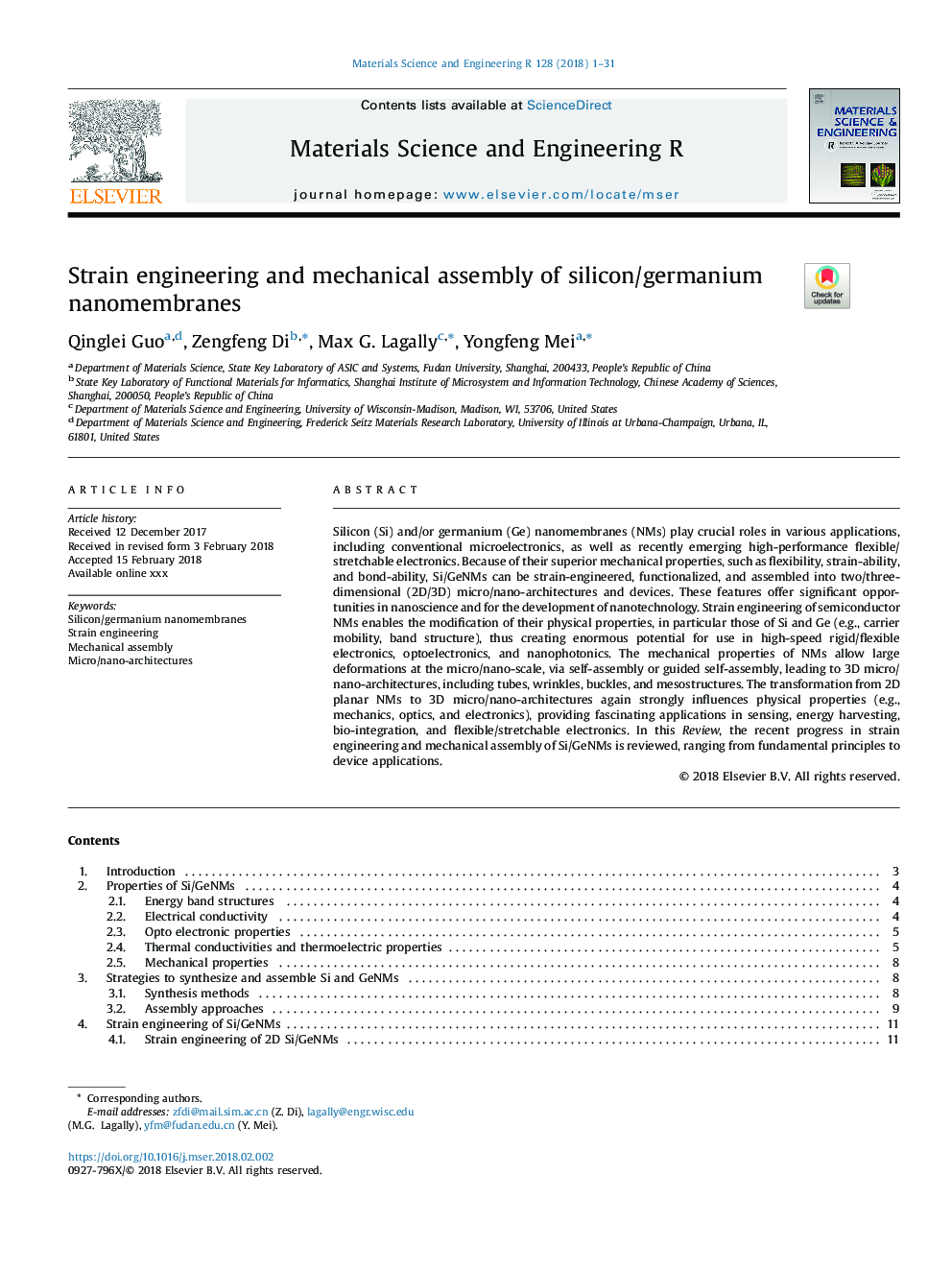| Article ID | Journal | Published Year | Pages | File Type |
|---|---|---|---|---|
| 7924384 | Materials Science and Engineering: R: Reports | 2018 | 31 Pages |
Abstract
Silicon (Si) and/or germanium (Ge) nanomembranes (NMs) play crucial roles in various applications, including conventional microelectronics, as well as recently emerging high-performance flexible/stretchable electronics. Because of their superior mechanical properties, such as flexibility, strain-ability, and bond-ability, Si/GeNMs can be strain-engineered, functionalized, and assembled into two/three-dimensional (2D/3D) micro/nano-architectures and devices. These features offer significant opportunities in nanoscience and for the development of nanotechnology. Strain engineering of semiconductor NMs enables the modification of their physical properties, in particular those of Si and Ge (e.g., carrier mobility, band structure), thus creating enormous potential for use in high-speed rigid/flexible electronics, optoelectronics, and nanophotonics. The mechanical properties of NMs allow large deformations at the micro/nano-scale, via self-assembly or guided self-assembly, leading to 3D micro/nano-architectures, including tubes, wrinkles, buckles, and mesostructures. The transformation from 2D planar NMs to 3D micro/nano-architectures again strongly influences physical properties (e.g., mechanics, optics, and electronics), providing fascinating applications in sensing, energy harvesting, bio-integration, and flexible/stretchable electronics. In this Review, the recent progress in strain engineering and mechanical assembly of Si/GeNMs is reviewed, ranging from fundamental principles to device applications.
Related Topics
Physical Sciences and Engineering
Materials Science
Electronic, Optical and Magnetic Materials
Authors
Qinglei Guo, Zengfeng Di, Max G. Lagally, Yongfeng Mei,
